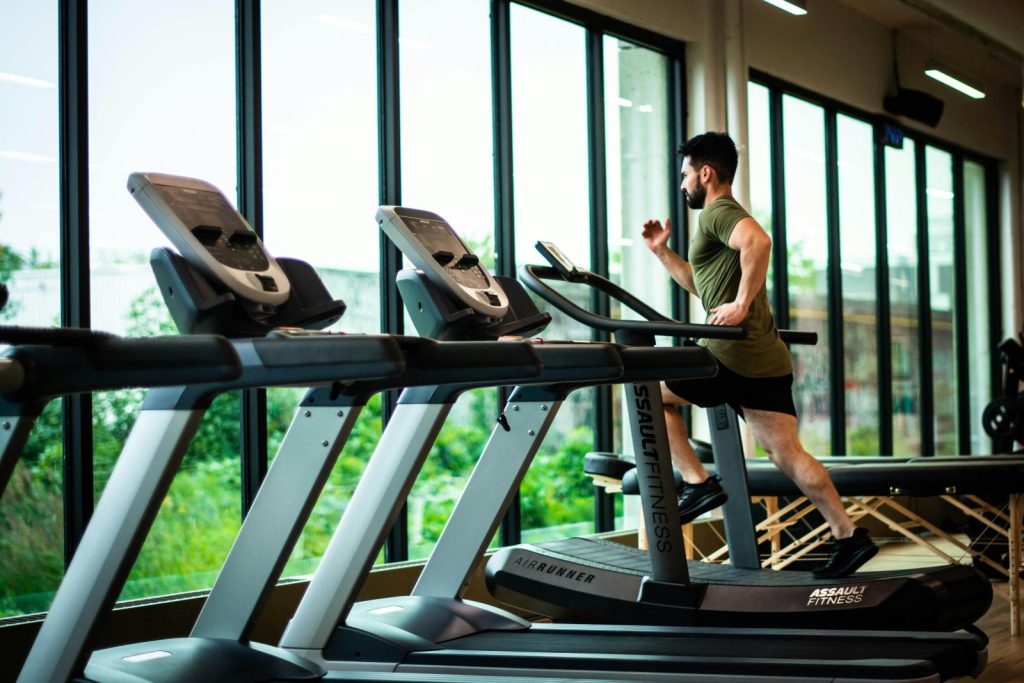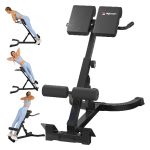cardio and losing weight: 10 Best No‑Gym Fat‑Burners for Fast, Positive Results

cardio and losing weight: 10 Best No‑Gym Fat‑Burners for Fast, Positive Results.
This research‑guided guide explains how cardio and losing weight work together, when to use HIIT vs steady‑state, and exactly how to structure home workouts for consistent fat loss without a gym.
The real problem with cardio and losing weight
Most people start strong then stall because sessions are random, intensity drifts, and nutrition never truly supports a mild calorie deficit, so cardio and losing weight feel like a grind instead of a system.
The fix is a simple framework that pairs the right dose of weekly cardio with strength or body‑weight circuits and a modest energy deficit, using proven guidelines so cardio and losing weight become sustainable.

What this guide delivers
- A balanced, evidence‑aligned approach to cardio and losing weight using CDC/HHS activity targets and flexible programming at home.
- A ranked list of 10 no‑equipment cardio options with clear structure, progressions, and safety cues that make cardio and losing weight practical.
- A plug‑and‑play weekly plan, FAQs, and a useful Amazon‑ready tool to upgrade cardio and losing weight with minimal cost or space.
Cardio and losing weight: the essentials
Weight change still follows energy balance; cardio and losing weight succeed when aerobic activity supports a calorie deficit while preserving daily movement and reasonable food choices.
Adults benefit from at least 150 minutes of moderate or 75 minutes of vigorous aerobic activity weekly, plus 2+ days of muscle‑strengthening, which is a dependable baseline for cardio and losing weight.
HIIT vs steady‑state: which burns more fat?
Across many studies, HIIT and moderate‑intensity continuous training produce similar fat‑loss outcomes, with HIIT sometimes saving time or slightly edging fat‑percentage reductions in certain groups, so both can drive cardio and losing weight.
Recent analyses show no universal superiority; outcomes depend on adherence, total energy expenditure, and program length, which means sustainable preference beats dogma for cardio and losing weight.
How intensity translates into calorie burn
The Compendium of Physical Activities quantifies intensity using METs; higher METs mean more energy burn, and this helps compare home options for cardio and losing weight.
For example, jump rope and vigorous calisthenics carry high MET values, while brisk walking sits in the moderate range, letting anyone scale cardio and losing weight to fitness and joints.
The 10 best no‑gym cardio exercises
1) Brisk Walking (outdoors or stairs)
- Why it works: Ultra‑accessible moderate intensity supports heart health and daily energy expenditure, making walking a cornerstone of cardio and losing weight.
- How to do it: Aim for brisk pace where conversation is possible but a bit breathy; extend duration or add hills to progress cardio and losing weight.
- MET guide: Moderate walking typically ~3–4+ METs depending on pace and terrain for steady cardio and losing weight.
2) Jogging or Run‑Walk Intervals
- Why it works: Alternating jogs with brisk walks increases total work without overwhelming joints, a smart on‑ramp for cardio and losing weight.
- How to do it: Start 1:1 work‑rest ratio (1 minute jog, 1 minute walk) for 20–30 minutes, then extend jog bouts as cardio and losing weight improve.
- MET guide: Jogging sits in vigorous ranges, greatly increasing energy burn for cardio and losing weight.
3) Jump Rope
- Why it works: High MET output, portable, and easy to progress with time or rhythm, making it a time‑efficient driver of cardio and losing weight.
- How to do it: Begin with 20–40 second bouts and 20–40 seconds rest for 10–15 rounds, then extend work intervals to scale cardio and losing weight.
- MET guide: Skipping rope is among the highest MET home options, supporting rapid calorie burn for cardio and losing weight.
4) Shadow Boxing or Punch‑Out Rounds
- Why it works: Whole‑body movement at variable intensities adds fun and adherence, two underrated levers for cardio and losing weight.
- How to do it: Three‑minute rounds at moderate‑vigorous effort with 60–90 seconds rest for 6–10 rounds build stamina for cardio and losing weight.
- MET guide: Calisthenics/boxing‑style circuits fall in moderate‑vigorous bands, raising weekly totals for cardio and losing weight.
5) Mountain Climbers
- Why it works: Combines cardio demand with trunk stability and hip cycling, a compact option to intensify cardio and losing weight.
- How to do it: Intervals of 30–45 seconds with equal rest for 10–15 rounds, maintaining consistent pace to anchor cardio and losing weight.
- MET guide: Vigorous calisthenics ranges apply, allowing significant energy use for cardio and losing weight.

6) High‑Knee Runs in Place
- Why it works: Minimal space, quick spikes in heart rate, and easy cadence tracking keep sessions potent for cardio and losing weight.
- How to do it: 20–30 minutes of 20s on/20s off or steady 60–90 second bursts builds a strong base for cardio and losing weight.
- MET guide: Classed within vigorous home calisthenics, effective for time‑efficient cardio and losing weight.
7) Stair Climbing or Step‑Ups
- Why it works: Adds vertical work that challenges legs and lungs, a joint‑friendly path to boost cardio and losing weight.
- How to do it: 10–20 minutes of continuous climbs or 1–2 minute intervals with controlled descents to progress cardio and losing weight.
- MET guide: Stair climbing typically sits in vigorous MET ranges, elevating calorie burn for cardio and losing weight.
8) Burpees (step‑back or jump)
- Why it works: Full‑body calisthenic with scalable intensity; even step‑back versions deliver a strong aerobic hit for cardio and losing weight.
- How to do it: EMOM (every minute on the minute) targets like 8–12 reps for 10–15 minutes; reduce reps to keep form clean as cardio and losing weight improve.
- MET guide: Falls in vigorous calisthenics ranges for robust energy expenditure supporting cardio and losing weight.
9) Jumping Jacks
- Why it works: Beginner‑friendly, rhythmic, and joint‑tolerant for daily movement “snacks” that sustain cardio and losing weight.
- How to do it: Accumulate 200–400 total reps in sets across the day or perform intervals of 45s on/15s off for 15–20 minutes to aid cardio & losing weight.
- MET guide: Moderate‑vigorous calisthenics range helps round out weekly totals for cardio & losing weight.
10) Low‑Impact Cardio Circuit (march, step‑outs, mini‑squats)
- MET guide: Sits in light‑to‑moderate ranges depending on pace, still contributing meaningfully to cardio & losing weight when done consistently.
- Why it works: Ideal for beginners or during deloads, maintaining movement volume for cardio & losing weight without joint flare‑ups.
- How to do it: 30–40 minutes continuous at a pace that keeps breathing elevated but controlled to support cardio & losing weight.

Weekly templates for cardio and losing weight
Beginner (150–180 minutes/week)
- 3 days: 30–40 minutes brisk walking or low‑impact circuit at moderate intensity for cardio & losing weight.
- 2 days: 10–15 rounds of 30s on/30s off mountain climbers or jumping jacks to spike intensity and help cardio & losing weight.
- Optional: Add 1 day of stair climbing for 10–15 minutes to raise weekly totals for cardio & losing weight.
Intermediate (180–220 minutes/week)
- 2 days: 25–35 minutes run‑walk intervals or steady jogs to build aerobic base for cardio & losing weight.
- 2 days: 20–25 minutes jump rope or boxing rounds (e.g., 3 minutes work, 1 minute rest x 6–8) to intensify cardio and losing weight.
- 1 day: 20–30 minutes stairs or step‑ups as a strength‑aerobic hybrid to support cardio & losing weight.
Advanced (time‑efficient mix)
- 2 days: HIIT sessions 20–30 minutes (e.g., 6–10 x 1–3 minute hard efforts, equal or slightly shorter rest) to compress cardio & losing weight.
- 2 days: 30–45 minutes steady‑state (brisk walk or easy jog) for recovery and volume that sustains cardio & losing weight.
- Strength: 2+ days/week body‑weight or dumbbell circuits to preserve muscle while pursuing cardio & losing weight.
How to progress safely
- Volume first: Add 5–10 minutes per week total before chasing maximal intensity to support long‑term cardio & losing weight.
- Then intensity: Shorten rests or add one interval to raise stimulus while keeping form crisp for cardio & losing weight.
- Track RPE: Most sessions at moderate RPE, a few at higher RPE; anchoring effort helps auto‑regulate cardio & losing weight.
Do cardio “snacks” count?
Short 5–10 minute bouts add up across the week, and adults no longer need 10‑minute minimums for official credit, which encourages flexible cardio & losing weight.
Accumulate brisk walks, quick interval blocks, or stair trips during breaks; consistency beats perfection for cardio & losing weight.
Nutrition keys that make cardio and losing weight work
A modest daily energy deficit paired with higher‑protein, high‑fiber meals reduces hunger and protects muscle during cardio & losing weight.
Consistency matters more than extremes; aim for sustainable patterns, adequate sleep, and stress management to support cardio & losing weight.
HIIT quick facts for cardio and losing weight
Meta‑analyses in young and middle‑aged adults show HIIT and moderate continuous training both reduce body fat, with small context‑specific edges for HIIT in time savings or certain subgroups, informing how to personalize cardio & losing weight.
Recent reviews using rigorous body‑composition methods suggest no universal superiority, reinforcing that the “best” plan is the one followed consistently for cardio & losing weight.
Product spotlight: Weighted Jump Rope Set (Amazon‑ready)
A weighted jump rope set with adjustable length and smooth ball bearings is an inexpensive tool that multiplies home options for cardio & losing weight with high MET output in small spaces.
- Why it helps: Quick intervals, portable design, and scalable loads make it simple to hit vigorous minutes, supporting weekly targets for cardio & losing weight.
- What to look for: Adjustable cables, comfortable grips, and durable bearings to maintain rhythm while progressing cardio & losing weight.
20‑minute HIIT sessions (no equipment)
Session A: Rope‑free “jump rope” simulation
- 40s fast hops, 20s rest x 10 rounds to mimic high‑cadence skipping that powers cardio & losing weight.
- Progression: +1 round weekly or add lateral hops to keep novelty high for cardio & losing weight.
Session B: Climbers + High Knees
- 30s mountain climbers, 30s high knees, 30s rest x 10 cycles, balancing trunk and cadence for cardio and losing weight.
- Progression: Extend to 45s work bouts as tolerance improves to scale cardio and losing weight.
Session C: Stairs EMOM
- Every minute: 30–40 seconds steady stair climbs, 20–30 seconds walk‑down recovery for 20 minutes to densify cardio & losing weight.
- Progression: Add one extra minute every week or hold a light object later to elevate cardio & losing weight.
Technique and safety fundamentals
- Warm up 5–8 minutes and finish with easy cooldown to protect joints while pursuing cardio & losing weight.
- Use pain‑free ranges and low‑impact options if joints protest; substitutions keep momentum for cardio & losing weight.
- Strength 2+ days weekly preserves lean mass and metabolic rate during cardio & losing weight.
Frequently asked questions
Does cardio alone guarantee fat loss?
No; cardio supports an energy deficit, but nutrition ultimately determines net loss, so pair movement with modest dietary adjustments for cardio & losing weight.
Is HIIT better than steady state for fat loss?
Both work; HIIT can be time‑efficient and sometimes slightly better in specific groups, but adherence and total work matter most for cardio & losing weight.
How many minutes per week should be the goal?
Start with 150 moderate or 75 vigorous minutes, then layer more as recovery allows to accelerate cardio & losing weight.
Do short bouts count?
Yes—adults no longer need 10‑minute minimums, so micro‑sessions contribute meaningfully to cardio & losing weight.
What if joints hurt?
Choose low‑impact options (walking, step‑ups, low‑impact circuits), adjust volume, and maintain strength training while still advancing cardio & losing weight.
How to break plateaus?
Tighten weekly minutes, add one interval, or increase daily step count, then reassess nutrition to maintain progress in cardio & losing weight.

Action plan: start this week
- Pick three of the top 10 moves and schedule 3–5 sessions totaling at least 150 minutes to anchor cardio & losing weight.
- Add 2 brief strength sessions and aim for a modest, sustainable calorie deficit to supercharge cardio & losing weight.
- Consider a weighted jump rope to unlock vigorous minutes anywhere, keeping cardio & losing weight efficient and enjoyable.


2 thoughts on “cardio and losing weight: 10 Best No‑Gym Fat‑Burners for Fast, Positive Results”
Comments are closed.